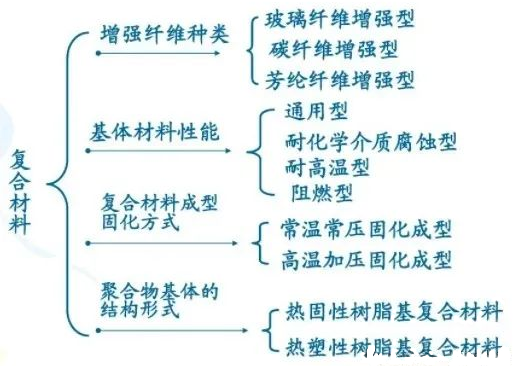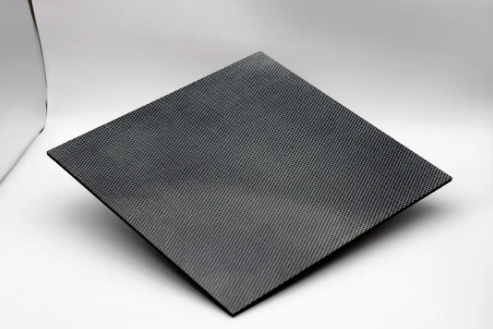Reinforcement materials in thermoplastic composites
Release time:
2025-03-21
In recent years, fiber-reinforced thermoplastic composites based on thermoplastic resins have developed rapidly, setting off a worldwide boom in the research and development of such high-performance composites. Thermoplastic composites are composites made using thermoplastic polymers (such as polyethylene (PE), polyamide (PA), polyphenylene sulfide (PPS), polyetherimide (PEI), polyetheretherketoneketone (PEKK), and polyetheretherketone (PEEK), etc.) as the matrix, and various continuous/discontinuous fibers (such as carbon fiber, glass fiber, aramid fiber, etc.) as reinforcement materials.
In recent years, fiber-reinforced thermoplastic composites based on thermoplastic resins have developed rapidly, setting off a worldwide wave of research and development of such high-performance composite materials. Thermoplastic composites refer to composite materials made of thermoplastic polymers (such as polyethylene (PE), polyamide (PA), polyphenylene sulfide (PPS), polyetherimide (PEI), polyetheretherketoneketone (PEKK), and polyetheretherketone (PEEK), etc.) as the matrix and various continuous/discontinuous fibers (such as carbon fiber, glass fiber, aramid fiber, etc.) as reinforcing materials.

Thermoplastic resin-based composite materials mainly include long fiber reinforced granules (LFT), continuous fiber reinforced prepreg MT, and glass fiber reinforced thermoplastic composite materials (CMT). Depending on the requirements, the resin matrix includes thermoplastic engineering plastics such as PPE, PAPRT, PELPCPES, PEEKPI, and PA. Fiber types include glass fiber, aramid fiber, boron fiber, and all other possible fiber varieties. With the continuous maturity of thermoplastic resin-based composite material technology and the development of recyclability, this type of composite material has developed rapidly. In developed countries in Europe and America, thermoplastic composites already account for more than 30% of the total amount of resin-based composite materials.
Thermoplastic Matrix
A thermoplastic matrix is a thermoplastic material with good mechanical properties and heat resistance, suitable for manufacturing various industrial products. Thermoplastic matrices are characterized by high strength, high heat resistance, and good corrosion resistance. Thermoplastic resins currently used in aerospace are mainly high-temperature-resistant, high-performance resin matrices, including PEEK, PPS, and PEI. Among them, amorphous PEI, due to its lower processing temperature and processing cost, is more widely used in aircraft structures than semi-crystalline PPS and high-forming-temperature PEEK.

Thermoplastic resins have better mechanical properties and chemical corrosion resistance, higher service temperature, high specific strength and hardness, excellent fracture toughness and damage tolerance, excellent fatigue resistance, the ability to be molded into complex geometric shapes and structures, adjustable thermal conductivity, recyclability, good stability in harsh environments, repeatable molding, weldability, and repairability.
Composite materials made of thermoplastic resins and reinforcing materials have durability, high toughness, high impact resistance, and damage tolerance; fiber prepregs do not need to be stored at low temperatures, with unlimited prepreg storage time; short molding cycle, weldable, high production efficiency, easy to repair; waste can be recycled; large degree of freedom in product design, capable of producing complex shapes, and wide molding adaptability.
Reinforcing Material
The properties of thermoplastic composites depend not only on the properties of the resin and reinforcing fibers but also on the fiber reinforcement method. The fiber reinforcement methods for thermoplastic composites include three basic forms: short fiber reinforcement, long fiber reinforcement, and continuous fiber reinforcement.
Generally, the length of short fibers is 0.2-0.6 mm. Since the diameter of most fibers is less than 70 μm, short fibers look more like powder. Short fiber-reinforced thermoplastics usually mix fibers into molten thermoplastic to manufacture. The fiber length and random orientation in the matrix make good wetting relatively easy. Compared to long fiber and continuous fiber-reinforced materials, short fiber composites are the easiest to manufacture but offer the least improvement in mechanical properties. Short fiber composites tend to form final parts through molding or extrusion methods because short fibers have less impact on fluidity. Long fiber-reinforced composite materials generally have a fiber length of about 20 mm and are usually prepared by cutting continuous fibers impregnated with resin to a certain length. The commonly used process is pultrusion, which uses a special molding die to pull a continuous roving of mixed fibers and thermoplastic resin. Currently, the structural performance of long fiber-reinforced PEEK thermoplastic composite materials formed by FDM printing can reach more than 200 MPa, and the modulus can reach more than 20 GPa. The performance through injection molding will be better.
In continuous fiber-reinforced composites, the fibers are "continuous," ranging in length from a few meters to several kilometers. Continuous fiber composites generally provide laminates, prepregs, or fabrics, formed by impregnating continuous fibers with the required thermoplastic matrix.

What are the characteristics of fiber-reinforced composites?
Fiber-reinforced composites are composite materials formed by reinforcing fiber materials such as glass fiber, carbon fiber, and aramid fiber, and matrix materials through winding, molding, or pultrusion processes. According to the different reinforcing materials, common fiber-reinforced composites are divided into glass fiber-reinforced composites (GFRP), carbon fiber-reinforced composites (CFRP), and aramid fiber-reinforced composites (AFRP).
Because fiber-reinforced composites have the following characteristics: high specific strength, high specific modulus; designable material properties; good corrosion resistance and durability; and a coefficient of thermal expansion similar to that of concrete. These characteristics enable FRP materials to meet the needs of modern structures for large spans, high rise, heavy loads, lightweight and high strength, and operation under harsh conditions, while also meeting the requirements of the industrialization development of modern building construction. Therefore, they are increasingly widely used in various civil buildings, bridges, highways, marine, hydraulic structures, and underground structures.
Great Prospects for the Development of Thermoplastic Composites
According to reports, the global thermoplastic composite market is expected to reach $62.62 billion by 2030, with a compound annual growth rate of 7.8% during the forecast period. This growth is attributable to the growing product demand from the aerospace and automotive industries and the exponential growth of the construction industry. Thermoplastic composites are used in the construction of residential buildings, infrastructure, and water supply facilities. Properties such as excellent strength, toughness, and recyclability and remoldability make thermoplastic composites an ideal choice for manufacturing in construction applications.

Thermoplastic composites will also be used to produce storage tanks, lightweight structures, window frames, utility poles, railings, pipes, panels, and doors. The automotive industry is one of the key application areas. Manufacturers are focusing on improving fuel efficiency, and to this end, they are replacing metals and steel with lightweight thermoplastic composites. For example, carbon fiber weighs one-fifth that of steel, so it helps reduce the overall weight of vehicles.
The prospects for thermoplastic composites are enormous, and domestic manufacturers are investing heavily in R&D, hoping that with the joint efforts of everyone in the future, domestic composite material technology can achieve a leading international position.
Disclaimer: This article is only for the exchange and sharing of professional knowledge and market information on composite materials and is not for any commercial purposes. If you have any doubts about the copyright of the article or the accuracy of its content, please contact us immediately. We will deal with it promptly.
Related News

